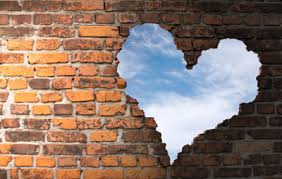I imagine right about now, many of us would love to create a more beautiful world, not to mention one that is more predictable, saner and safe. But is this even possible? And how do we get from here to there?
I’m reading an excellent book on this subject, one that I highly recommend:
The More Beautiful World Our Hearts Know Is Possible by Charles Eisenstein.
The author emphasizes our minds don’t know this is possible, but our hearts do.
Eisenstein says the world is living in, and shaped by, an Old Story of Separation which causes all manner of pain and dysfunction. The book explores various facets of that state of being: “the habits associated with it, the wounds bound up in it, the stories that reinforce it, and the social institutions that reflect and sustain those stories.”
Eisenstein says separation isn’t real; in truth we are interconnected. “We are the same being looking out at the world through different eyes.” He says we need to create a New Story of Interbeing. You’ll notice the role of old and new stories in the book is very analogous to the work we do with old and new stories in forgiveness.
Eisenstein says: “By your actions, you choose which story and which world you are part of.”
“As a story ages, cracks appear in its boundary, in the shell of the cosmic egg. A miracle is the name we give to the light that shines through from a larger, more radiant world. it says not only that reality is bigger than we thought it was, but that that bigger reality is coming soon. it is both a glimpse and a promise.
To the extent that we ourselves are living in the realization of interbeing we too are able to become miracle workers. That doesn’t mean that what we do seems miraculous to ourselves — it fits in with our expanded understanding of the nature of life and causality. For example:
- When one is aligned with the purpose of service, acts that seem exceptionally courageous to others are a matter of course.
- When one experiences the world as abundant, then acts of generosity are natural, since there is no doubt about continued supply.
- When one sees other people as reflections of oneself, forgiveness becomes second nature, as one realizes “But for the grace of God, so go I.”
- When one appreciates the order, beauty, mystery, and connectedness of the universe, a deep joy and cheerfulness arises that nothing can shake.
- When one sees time as abundant and life as infinite, one develops super human patience.
- When one lets go of the limitations of reductionism, objectivity, and determinism, technologies become possible that the science of separation cannot countenance.
- When one lets go of the story of the discrete and separate self, amazing intuitive and perceptual capabilities emerge from lifelong latency.
These and many other miracles are the landmarks of the territory of “interbeing.”
Sounds pretty good, don’t you think?
The New Story isn’t one we can create alone. The author stresses, we must each do all we can to create the New Story and at the same time, the New Story only becomes possible because we are creating it together. But the key is that each of us must choose which story we will stand in.
As more of us enter this territory . . . together we find our way toward the more beautiful world our hearts know is possible.
Love,
Eileen




 The Path of Forgiveness is The Path of Miracles.
The Path of Forgiveness is The Path of Miracles. Miracles are poorly understood. Often we think of them as events in which the laws of the universe, the laws of cause and effect, are somehow circumvented. A miracle occurs when something impossible happens. We believe this about miraculous events only because we fail to understand the processes of cause and effect that enable them. We are very much like Neanderthals observing an eclipse. Because we lack the proper knowledge, we rationalize what we observe in peculiar, supernatural terms when, in fact, what transpires has an entirely natural explanation.
Miracles are poorly understood. Often we think of them as events in which the laws of the universe, the laws of cause and effect, are somehow circumvented. A miracle occurs when something impossible happens. We believe this about miraculous events only because we fail to understand the processes of cause and effect that enable them. We are very much like Neanderthals observing an eclipse. Because we lack the proper knowledge, we rationalize what we observe in peculiar, supernatural terms when, in fact, what transpires has an entirely natural explanation.


 Sign up for our newsletter and get a complimentary copy of Eileen's book "Walking the Path of Forgiveness"
Sign up for our newsletter and get a complimentary copy of Eileen's book "Walking the Path of Forgiveness" EILEEN BARKER is an internationally recognized mediator, facilitator, forgiveness teacher and pioneer in the movement to integrate emotional healing and forgiveness in conflict resolution. In addition to her popular workshops and retreats, Eileen offers private forgiveness coaching. She is the author of the Forgiveness Workbook.
EILEEN BARKER is an internationally recognized mediator, facilitator, forgiveness teacher and pioneer in the movement to integrate emotional healing and forgiveness in conflict resolution. In addition to her popular workshops and retreats, Eileen offers private forgiveness coaching. She is the author of the Forgiveness Workbook.
